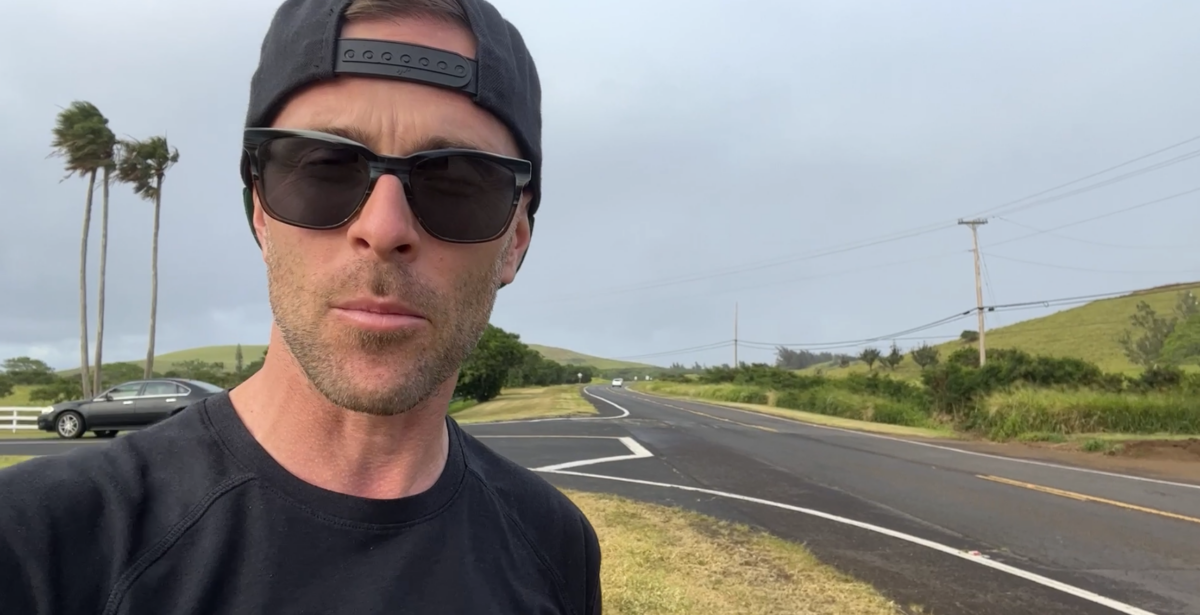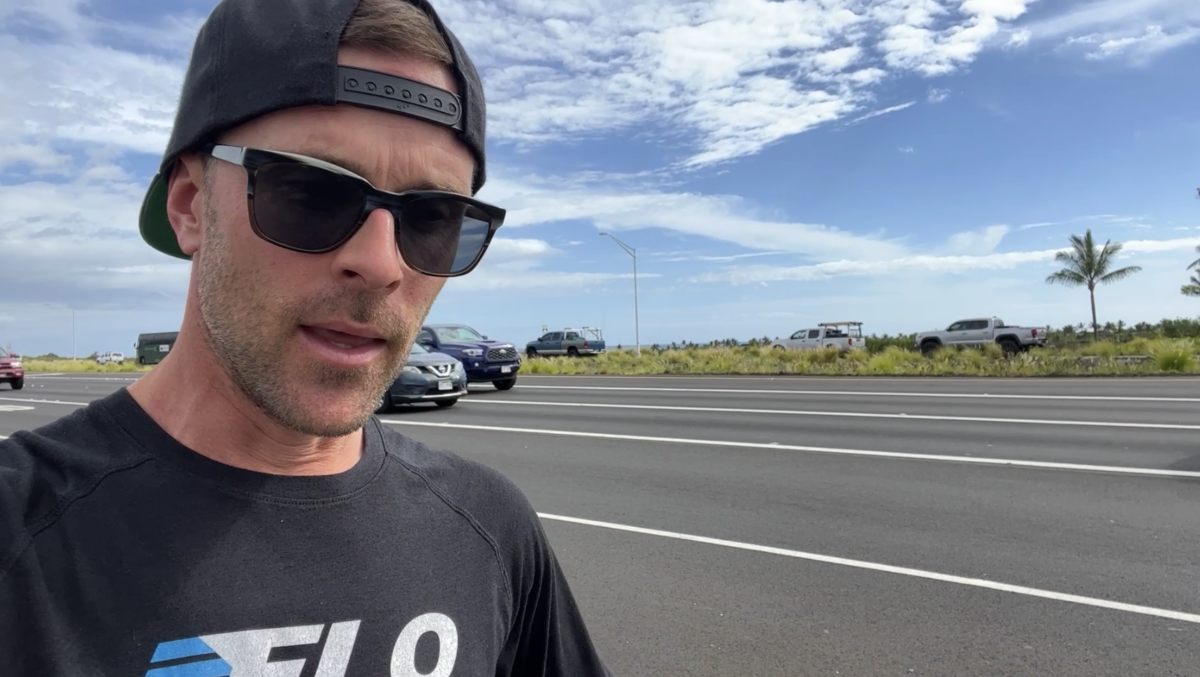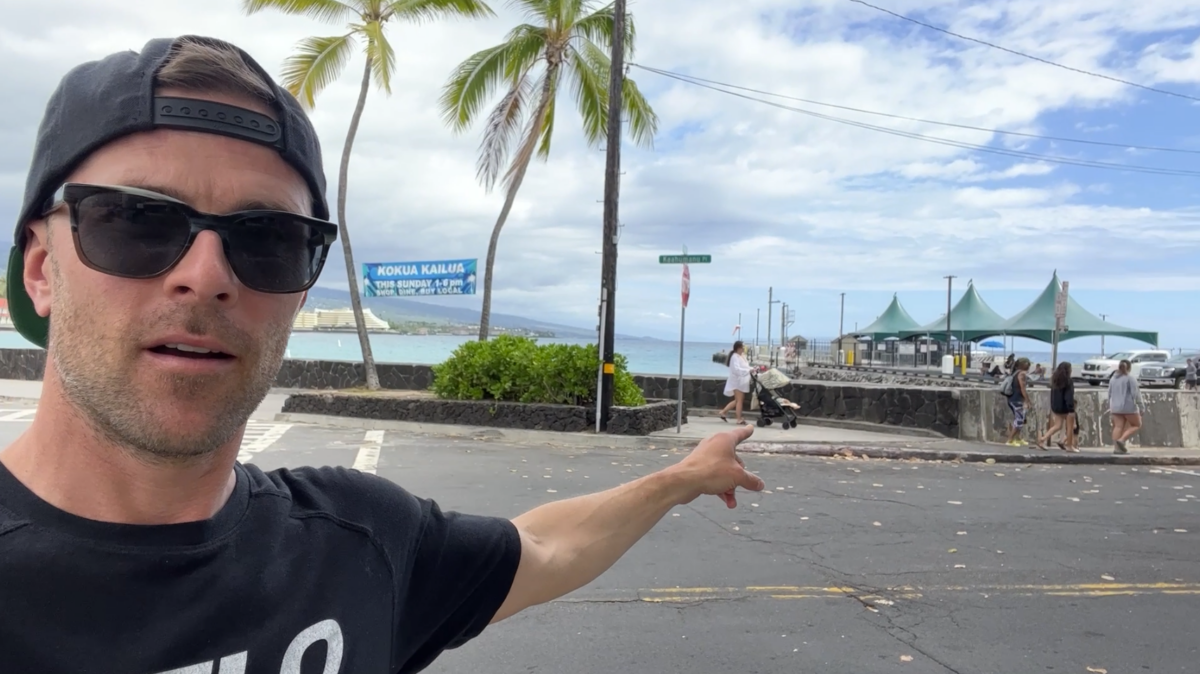I recently visited The Big Island of Hawaii and reviewed the bike course for Ironman Hawaii 70.3 and Ironman Kona. I’ve spent time studying the course and have been fortunate to attend the World Championship race seven times. Over the years I’ve learned a lot and hope this article will help prepare you for your best day on the island.
The Wind in Kona Is Real

One of the most frequently asked questions for athletes preparing for a race is if they should consider a wheel change on a windy course. In most cases, we tell people not to worry. Kona, however, is an exception to the rule.
Based on our research, we know that the average yaw angle a cyclist sees is in the range of -10 to 10 degrees of yaw. Zero degrees would be straight at you and -10 or 10 would be slightly to your left or right.
The wind in and around the town of Hawi is extreme and blows straight across the road. With 90-degree wind angles, you will experience a yaw angle steeper than the average 10.
In the video linked here, you can see the trees blowing sideways. Because of these extreme winds, disc wheels are illegal and you should consider a shallower front wheel.
Ideally, you want to stay in the TT bars for the duration of the race. If your wheels are too deep, you will find yourself out of the bars to handle the bike, which can cost you minutes. Choosing a shallower wheel you can handle will cost you less than 30 seconds.
Inevitably, every year athletes ask if we brought any FLO 49 AS wheels (our shallowest wheel choice). After riding the course, they find the wind is stronger than expected and want to change. Consider this ahead of time so you have the wheels that are best for you and your day.
The Steel Belted Radial of the Queen K
The road surfaces on the Kona race courses are actually in really great shape. What’s not-so-great is the debris in the road. Kona is notorious for exploded car tires, or steel-belted radial debris, on the road. The steel structure explodes like shrapnel and ends up on the side of the road causing many bike tire punctures.

Some choose a Continental Gator Skin because of its durability but our studies showed that it can cost an athlete 8 minutes over an Ironman due to its terrible rolling resistance. In many races, this can be the difference between 1st and 10th, so it’s not what we recommend.
Our recommendation for preventing flats with this type of debris is to choose a tubeless tire. Steel-belted radial can puncture a tube but shouldn’t cause issues with tubeless tires. In theory, you can ride with pieces of radial in your tires and not lose pressure. Our tire of choice is the Continental GP 5000 S TR. It’s the perfect blend of aerodynamics, rolling resistance, and durability.
The Heat, It’s Hot
If you’ve heard it’s hot in Kona you’ve heard right. The energy lab, a punishing part of the run, is an offshoot of the bike course. The Queen K sees extreme temperatures, causing tire pressure issues if your tires are not set up properly.
We always hear stories of tires popping in transition or people hitting T1 and finding a flat. The main reason for this is that their tire pressures were too high. Why and how does this happen?

Tire sizes have increased and some still believe 120psi is the recommended pressure. It’s not. It’s too high. That alone or paired with a tire pressure set indoors in a cool hotel room, say 72 degrees, with cold tires, will also cause issues. Surface temperatures can reach 130+ degrees on the course. Tire pressure increases 2% for every 10 degrees in temperature change. So, once that tire (either initially overinflated or inflated in a cool hotel room) is placed in transition, you’re almost guaranteed a tube or tire failure.
When studying rolling resistance on the road, we developed a protocol to accurately set tire pressure. Being based in Las Vegas, we know a little about heat and had to account for that during testing. Our protocol included the following:
- Ride 5 minutes in the temperature you will be riding at to warm up tires.
- Set tire pressure once the tires are warm.
This simple trick allowed us to maintain tire pressure through a test. For racing, we recommend the following.
- Warm your tires up at as close to race day temperatures as possible before setting your pressures.
- Use our tire pressure charts to find your ideal temperature.
- Set your tire pressure. If you need help getting accurate pressures, check out our FLO Air Gage.
Even if your bike sits overnight and the pressure decreases as the temperature drops, the pressure will increase back to ideal as you ride in the heat the next day. Remember, being slightly under on tire pressure is better than being over. Once your tire pressure is too high, you lose 1 watt for every 1 psi you are over. Err on the side of lower pressure.
Final Thoughts
If you are racing Ironman Hawaii or Ironman Kona and want to talk through your wheels, tires, or tire pressure, feel free to reach out to book a Wheel 1:1. I’d be happy to help. Following the advice of this article can mean the difference between 1st place and 10th place for some or it may mean making a cutoff for others. Regardless of where you fit in the pack, this advice will help everyone have their best day. We hope to see you out there this year. Mahalo!

Co-founder at FLO Cycling. Jon manages the day to day operations and acts as the lead engineer for all FLO products.
